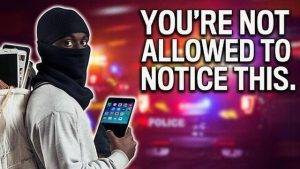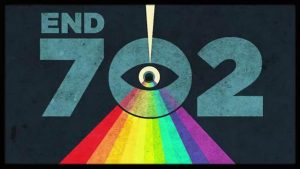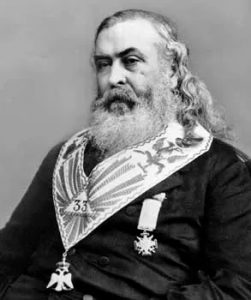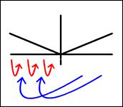“Nicaragua Betrayed” Summary— Chapter 8: Pedro Joaquin Chamorro
by Edward Ulrich
News of Interest.TV
February 12, 2011
This chapter describes Anastasio Somoza’s most well known nemesis Pedro Joaquin Chamarro, who published a Sandinista newspaper in Managua that called for violent revolution against Somoza and the government of Nicaragua. It explains how Chamarro was assassinated at the direction of a disgruntled business partner with the gunmen then being brought to justice— but with the international media still inaccurately accusing Somoza for his death, and with local adversaries of Somoza attempting to capitalize on the assassination but failing in their efforts.
Following are key points from the chapter:
— The newspaper owner Pedro Joaquin Chamorro was well known in Nicaragua and was recognized in other nations of Central America with his having important contacts primarily in the news media of the Western Hemisphere, being due to his devotion to Leftist causes.
— Chamorro was Somoza’s enemy, and he was the publisher and editor of La Presna, which was the opposition newspaper in Nicaragua, in which he regularly attacked Somoza, Somoza’s family, Somoza’s government, and everything for which Somoza stood. Due to the freedoms of the press, Chamorro engaged in all sorts of smears and often it went beyond limits of reputable journalism. “If it served his purpose, he misrepresented facts, distorted truths to suit his own fancy, and printed lies. Such was the journalistic nature of Pedro Joaquin Chamorro.”
— “[Chamorro] had a penchant for Leftist-leaning people and Leftist-leaning causes. At an early date, he began a relationship with the Sandinistas that was to last until his death.”
— Chamorro had friends of importance, but mostly it was because they were enemies of Somoza, such as Jack Anderson at the U.S. Embassy. Chamorro was also a friend of Carlos Andres Perez, who was an adversary of Somoza that became the President of Venezuela.
— Chamorro was in the middle of the Sandinista movement and in a conspiracy to overthrow Somoza, and he was also aiding conspiratorial efforts in Washington D.C. through his collaborating with a staff member of the Congressman Ed Koch of New York named Flynn who was involved in publishing sensationalism about Somoza. “All of this was used against me. Then I began to put the puzzle pieces together— Chamorro, with the WOLA, with Koch through Flynn and Mark Schneider, and with Senator Edward Kennedy, represented conspiracy.”
— As Somoza’s troubles in Nicaragua increased, Chamorro became more brazen. He became one of the key Sandinistas. Somoza describes him as both his enemy and his ally— calling him an “ally” due to the fact that he proved that Somoza allowed freedom of the press in Nicaragua.
— Somoza’s relationship with Chamorro started all the way back in grammar school. “.. but even as small boys there was a conflict. As youngsters, we had many fights, but in our boyish fisticuffs, Chamorro never bested me. I always won. Psychologically, I think, the results of those early encounters stayed with him all of his life. When, in adult life, my name was mentioned or he thought of me, I think it triggered a mental response, and that response was hostility.”
— As a young man, Chamorro was implicated in printing leaflets which contained “four-letter-word” abuse of Somoza’s father, so Chamorro’s family thought it best to send him off to Mexico for a time, and it was there where he received his first Sandinista-type training and he “swallowed the leftist philosophy hook, line, and sinker.” “He returned to Nicaragua a confirmed radical and was convinced that the United States was the scourge of the earth. That anti-U.S. sentiment was to stay with him always.”
— “There were others in Nicaragua who had deep animosity for me, but Chamorro won the ‘hate Somoza’ contest hands down. Attention is devoted to him because his death would serve as a catalyst for the Sandinistas, the Chamorro followers, and those who just didn’t like me. His death would inflame the international press and they would retaliate against me.”
— On the morning of January 10, 1978, Somoza received word that Chamorro was shot and killed, which immediately worried Somoza that riots would ensue as a result and that he would be blamed for the death. He knew that no one associated with his Administration would be involved due to Chamorro representing the opposition.
— Riots soon broke out near the building where La Prensa was published, with the news media focusing on people carrying signs that said “Down with Somoza.” Many well-orchestrated demonstrations occured led by known Communists who collaborated with the media to make the mob very active and vocal while the television cameras were rolling. Through photographs of such demonstrations, many known Sandinistas could be identified.
— Somoza explains that on July 23, 1959, some students in Leon were killed due to a misinterpretation of orders, which caused protest demonstrations in thirteen cities in Nicaragua. “After Chamorro’s death, there were demonstrations in three cities, so it could have been a lot worse.”
— Somoza received an important break within hours of the murder. His cousin Louis Pallais was the editor of a newspaper Novedades, which was the Somoza family newspaper. Pallais learned that a reporter at the paper was approached by a man named Silvio Peña who was married to one of the reporter’s relatives, who told him that he was going to kill Chamorro. With that information Somoza had Peña apprehended due to his car fitting the description of the murder car to a “T”. Peña was then subjected to an intense interrogation where he soon blurted out the whole story. Somoza says, “The international press never gave us credit, but, in my opinion, much credit was due. Within two hours from the time of the crime, we had the murderer and we had a confession.”
— Peña killed Chamorro under the instructions and payment of Dr. Pedro Ramos, who managed a blood plasma plant in Managua. Ramos had litigation pending against Chamorro for defamation of character. Somoza explains that a letter he was privy to showed that Ramos and Chamorro had a business deal associated with the plasma plant, and Chamorro was somehow ousted from his piece of the business that prompted him to publish slander attacks in his newspaper.
Following is from pages 114 - 116:
After Chamorro was killed, he was taken to the hospital where he was prepared for burial. From the hospital, he was taken to his home where a wake was held. From his home, the body was taken to the “La Prensa” building for another wake. In every one of those moves there were hundreds or thousands of people destroying property as they marched along. The crowd would move from one side of they street to the other, so that nothing was missed in the destruction. ... Since the polemic between Chamorro and Ramos and his blood bank operation was well known and had broken wide open a few weeks before the killing of Chamorro, the agitators decided they wanted to kill all the Cubans and foreigners who worked at the blood bank. There wasn’t much logic to their thinking but, then, what mob has any logic at all? The way these people rationalized was that Chamorro’s latest enemy was Ramos, so let’s kill all the people associated with Ramos.
The Cubans and foreigners who worked for Ramos became very frightened, and they should have been. All of these people then made a hasty trip to the U.S. Embassy where they sought protection. The mob had destroyed the plasma plant, the dwellings of the Cubans, and now they wanted the people.
The next thing I knew Ambassador Solaun was calling for an urgent appointment. Naturally, I told him to come over. This time he was asking me for a favor. Things were always different when the Ambassador wanted something from me. He pleaded with me to approve a plan to move all the Cuban Americans to the United States. He had a problem on his hands and I knew it. I was amicable with the Ambassador and told him that posed no real problem and to proceed with the plan. So, they were shipped out.
— Somoza explains that Chamorro thought of himself as being a kingpin of Managua, and when he directed his venom at Ramos, he chose the wrong person. Ramos first tried to sue Chamorro, but found out that when Chamorro is sued his attacks grow worse, so Ramos apparently concluded that “personal satisfaction” was his only recourse. Peña hired three accomplices in the murder, and he named them in his confession and they were shortly apprehended. Dr. Ramos had gone to Miami before the murder and apparently still resides there.
— The legal structure of the judicial system of Nicaragua was based upon the Napoleonic Code, which is more cumbersome and liberal than the judicial system in the United States. A dilemma existed because the Nepoleonic code did not allow public interrogations, which would lead the news media to think that Peña was saying what Somoza or someone in the government had advised him to say, so Somoza decided that the interrogation should be open and with no restriction of the press, with associated defense requirements being set aside. “I wanted every reporter, every radio commentator, all interested parties and, through them, the people of Nicaragua to know the truth.”
From pages 116 - 117
For three complete days and a good part of the nights, Nicaraguans were glued to radio and televisions. Peña and his accomplices were made available to some fifty members of the press, radio, and television. These members of the news media could ask whatever question they chose to ask. For sheer drama, no “soap opera” ever produced could compare to those three days in Managua. Each accused cried, and each man confessed. Not a single detail of the crime was left unexplored. It was clearly established that Peña and his accomplices had committed premeditated murder.
...
These defendants were interrogated by the presiding judge, the news media, and even interested parties, so far as I know, this type of interrogation had never occurred before.
When it was all over, the people of Nicaragua were convinced, through the facts, that the true killers of Pedro Joaquin Chamorro were in the hands of the law— except the newspaper La Prensa and the Chamorro family. I regretted circumventing the Napoleonic Code, but for me there was no other choice.
The family of Chamorro, and particularly Mrs. Chamorro, would never openly admit that Peña and his accomplices committed the murder. Mrs. Chamorro said “the system” killed her husband. In reality what killed Chamorro was his extreme attack on Dr. Ramos, a Cuban and naturalized U.S. citizen.
— Somoza explains that some years previously one of his officers in the Army became acquainted with the son of Chamorro, and the officer suggested he visit with Somoza. Following is Somoza’s account from page 117:
One of [Chamorro’s son’s] complaints against the government went back to housing construction after the earthquake. He maintained that new, expensive homes were constructed for the affluent and that this was discrimination. I explained to him that the middle class had to have housing just the same as the poor and that special credit arrangements had been made for the housing to which he referred.
I told him that nothing was given to those people. They obtained credit and they would have to meet their financial obligations on those houses. I further explained to him that much of this money was obtained through savings and loan associations for just such housing construction. Young Pedro Joaquin was obsessed with the idea that everyone who had a new house had stolen it. Many others shared this view. To some degree, I think my explanation made sense to Chamorro’s son.
— Somoza later learned that Dr. Ramos and Venezuela’s leader Carlos Andres Perez had been roommates in Cuba. “It’s intriguing to note that Perez and Chamorro were allies and that the former roommate of Perez had Chamorro killed.”
— Prior to the assassination of Chamorro, a committee was formed to be a “mediation team” between the government and the opposition consisting of the Conservative party leadership, other minority parties, and businesses who opposed Somoza and the government. They attempted to put Somoza in a position where they could claim he was being uncooperative so they could justifying calling for a strike, but Somoza pointed out to them that the meetings needed to take place after the coming elections in order to ensure that rumors would not exist that political deals were being made, which threw their plans off.
— Between that meeting and the election, Chamorro was assassinated, and the Chamber of Commerce of Managua immediately denounced the government, releasing a statement stating that there was no justice in Nicaragua. “They gave no consideration to the fact that within two hours we had the assassin under arrest and would shortly apprehend his accomplices. It mattered not that all these men confessed in public and that each was given a lie detector test to affirm his confession. What they wanted was an excuse to demonstrate against the government and Chamorro’s death was that excuse.”
— The Chamber then called for a general strike for the entire country and refused to meet with Somoza. On the onset of the strike Somoza noticed that crowds were gathering in front of the stores who wanted to work rather than strike. “When I observed that this was an owner’s strike and, in reality, a lockout, I knew that those who called the strike had no force. The working people were not with them.”
— It was decided to conduct a census in Managua to determine just how effective the strike was, and they used the government facilities to take a complete census of every business in Managua. They found that out of five thousand business houses in Managua, 50 percent were open and doing business. Smaller stores were keeping their doors open, and the same pattern existed in other cities.
— From pages 120 - 122:
Government officials from many places in Nicaragua called to ask me what I was going to do about the strike. My response to all these people was the same: “Nothing, it’s their right to close their shops because it’s their property.” I pointed out that those facilities which provided public service would be required to stay open because that was the law.
This strike was not without bitterness. Many of the smaller shop owners were threatened, some had their businesses bombed and burned, and some were attacked. But in the end the striking owners, who had been urged by the Chamber of Commerce to take that course of action, were defeated. The strike lasted approximately two weeks.
Those striking business people didn’t understand that Managua was not a sophisticated society. The residents of Managua had survived an earthquake and they knew how to obtain the necessities of life. The open markets, where fruits, vegetables, and all sorts of things could be obtained, were doing a thriving business. The small, out of the way stores were selling like crazy. The larger store owners didn’t understand that they were only hurting themselves. Toward the end of strike, some of those who had their front doors closed were actually selling out of the back door.
The Chamber of Commerce, the committee which came to see me, and the opposition party misread the mood of the people in Nicaragua, these people were in no mood to overthrow the government. The combined opposition forces saw, in the death of Chamorro, what they believed to be an ideal time to force a change in the government. While their opposition rallies were drawing only 10,000 people in a city of 600,000, rallies supporting the government would draw as many as 150,000. This should have told these people something, but it didn’t.
... Chamorro’s death caused the group to make their move before they were fully prepared. Prepared or not, the move would have failed. The people of Nicaragua were behind me and the government. The opposition learned this the hard way.
After the strike was over and after the election on February 8, 1978, I contacted the committee and advised them that I was ready to meet with them again. I was advised they didn’t want to meet with me and, naturally, I wanted to know why not. Their answer was: “It’s too late.” They were really saying that I had whipped them, and that a meeting at that point would serve no purpose for them. They simply didn’t have the support of the people and they knew it.
...
The ghost of Chamorro was still to haunt me until I left my country. Immediately after his death, the international press blamed me. Even with the confessed killers in jail and even with all the evidence presented which included the arms that were used to kill Chamorro, a confirming lie detector test, and the testimony of others who had been approached by Peña to assist him in the murder, the Chamorro family, through “La Prensa,” and the biased news media, continued to implicate me. Most of them barely touched on the incarceration of the confessed killers. The people of Nicaragua knew the truth, but the outside world never got the word.
...
[Editor’s Note: Even to this day much disinformation exists about the death of Pedro Joaquin Chamorro. It is very common for information sources to either blame his assassination on Somoza or overtly make the suggestion that he was involved. A tremendous amount of published disinformation exists about the topic of Anastasio Somoza’s life, it is very important to the global elite that the truth about Nicaragua is not known.
In 1990, Pedro Chamorro’s widow, Violeta Barrios de Chamorro, became President of Nicaragua.]
Purchase the book “Nicaragua Betrayed” from Amazon.com.








